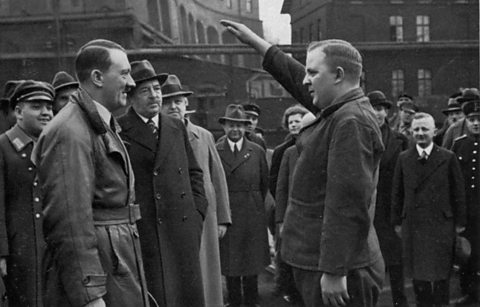Nazi racial ideas and policies
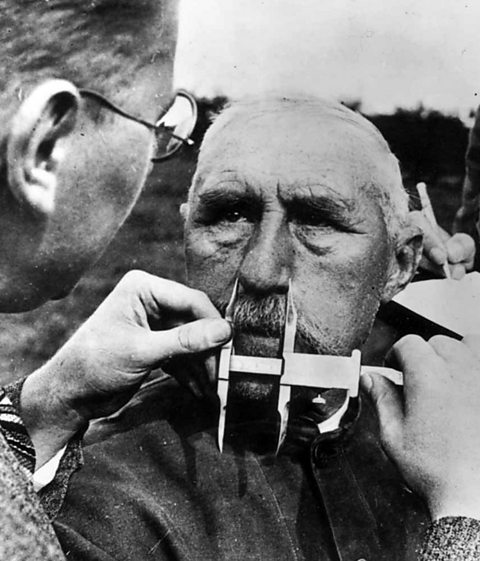
Hitler and the Nazis had firm views on race.
They believed that the Germans were AryanA person of European descent - not Jewish - often with blond hair and blue eyes. The Nazis viewed Aryans as the superior human race. and therefore the Master Race, and so all other groups were inferior to them.
Many Nazi scientists believed in eugenicsThe science of using controlled breeding or genetic manipulation to produce desired qualities or features. and selective breeding.
They believed that people with disabilities or social problems were "degenerates" whose genes needed to be eliminated from the human bloodline.
The Nazi policy of eugenics was carried out forcibly, with over 360,000 people sterilisationA permanent form of contraception which usually involves an operation to prevent a person from being able to reproduce. against their will and more than 70,000 murdered, or euthanasiaThe deliberate ending of someone’s life..

The treatment of minorities
Hitler persecuted a wide range of minorities in Germany including the SintiThe group of Roma people who lived in central and eastern Europe. and RomaA group of people (Romani) that arrived in Europe in migrations from northern India around the 14th century., homosexuals, those with disabilities and the Jews.
Eventually, there were systematic programmes for the elimination of many of these minorities.
Sterilisation: In order to keep the Aryan race "pure", many groups were prevented from reproducing. The sterilisation of people with mental and physical disabilities and with hereditary diseases was made legal in 1934. Children born to German women and French African soldiers in the Rhineland at the end of World War One were also sterilised. 360,000 sterilisations were carried out.
Euthanasia: The killing of people with physical and mental disabilities began at the start of the war in August 1939, when 5,200 children were secretly killed.
Concentration camps: Jews, homosexuals, prostitutes, Jehovah's Witnesses, Sinti and Roma, alcoholics, pacifists, street beggars and criminals were often rounded up and sent to camps.
Nazi persecution of the Jewish community
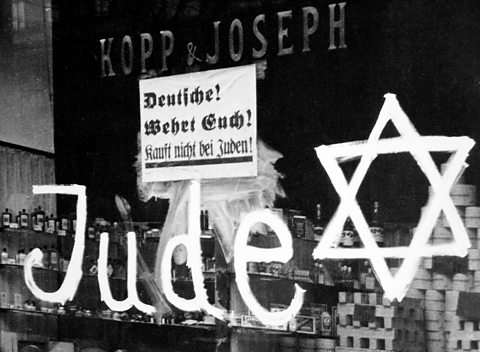
From 1933 onwards, there was gradual persecution of the Jews.
Hitler used them as scapegoatA person or group of people unfairly blamed for the mistakes or failures of others. for Germany’s problems, such as losing World War One and the Great DepressionA global economic crisis that started in 1929 in the USA. It led to mass unemployment and hardship throughout the 1930s., but he also vehemently hated this race.
In 1935, the intensity increased and eventually reached a turning point during Kristallnacht in November 1938.
Anti-Jewish Legislation of 1933
On 1 April 1933, the Nazis ordered a boycottA refusal to buy goods or services from a person or organisation as a form of punishment or protest. of all Jewish shops and businesses. The boycott lasted for one day. Many German citizens ignored the ban and continued to use Jewish-owned businesses as usual.
Also in April 1933, Jewish people were banned from working for the civil service.
The Nuremberg Laws, 1935
In 1935, the Nuremberg Laws were passed.
The aim of these laws was to take away the rights of Jewish people to be citizens of Germany.
This did not mean they had to leave the country, but it took away their right to help or support from the government, which led to the withdrawal of state education and healthcare.
Night of the Broken Glass, 1938
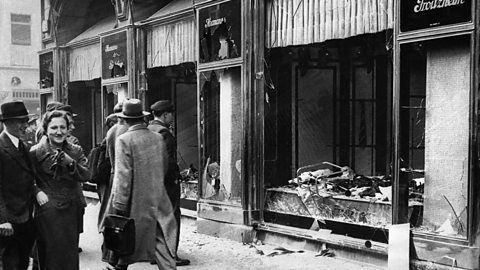
Kristallnacht - 9-10 November (The Night of Broken Glass). The SSThe Schutzstaffel, also known as the Blackshirts. A police/military style organisation created to serve as Hitler’s personal bodyguard. In Hitler's Germany they eventually controlled the intelligence, security and police forces, and the extermination of those they considered undesirable. organised attacks on Jewish homes, businesses and synagogues in retaliation for the assassination of the German ambassador to France by a Jew. During Kristallnacht, 400 synagogues and 7,500 shops were destroyed.
Jews were then made to clear up the destruction on their hands and knees and pay a fine of one billion marks to the government.
The remaining Jewish property was then confiscated.

Events in 1939
In March, there were mass arrests. 30,000 Jews were sent to concentration camps.
When the war broke out, Hitler increased the persecution of the Jews. He developed his anti-Jewish policy to include the creation of ghettoes in Poland and eventually the A plan formulated by the Nazis to exterminate the Jewish people. known as the HolocaustThe Holocaust was the murder of approximately six million Jewish men, women and children by Nazi Germany and its collaborators during World War Two..
The impact of Nazi actions and policies by 1939
Persecution was initially gradual.
It intensified greatly from 1935 onwards with the passing of the Nuremburg Laws.
The only lull was during the Olympic Games, held in Berlin in 1936.
Persecution affected every aspect of the lives of Jews, including:
- employment.
- ownership of property.
- education.
- travel.
- marriage.
- civil liberties and political rights.
Many Jews saw the events of Kristallnacht as a turning point.
Up until then, there had been a progressive removal of their rights, but most Jews had not been physically attacked.
When their businesses and homes were destroyed and their synagogues were burnt down, many concluded that it was time to leave Germany.
The effectiveness of Nazi actions and policies by 1939
Persecution of minorities was one of the more successful Nazi policies, but it was not without trouble for the Party.
In 1933, the German public reacted badly to the SturmabteilungA group within the Nazi Party, also known as Stormtroopers, who wore military uniforms and marched through the streets. They were very violent and often attacked political opponents, such as communists, in the street. boycott and harassment of the Jews.
Hitler had to order a more cautious policy for a while.
However, persecution continued and from 1935 onwards there was a significant increase in it.
In general, the Nazis were able to persecute the Jews with little objection from the public.
Why was there little objection from the public?
- Censorship meant the public did not know the full extent of the persecution.
- Propaganda used the Jews as scapegoats for the country’s problems, so they were not popular in Germany.
- eugenicsThe science of using controlled breeding or genetic manipulation to produce desired qualities or features. and anti-semitismHostility or prejudice against Jews. taught in schools and the Strength Through Joy (KdF)A Nazi organisation set up to organise leisure activities. branded the Jews as undesirable "subhumans".
- Some Germans were jealous of the fact that Jews held many professional jobs and owned businesses. They believed the relatively small number of Jews were more influential than they should have been.
- Fear of the SSThe Schutzstaffel, also known as the Blackshirts. A police/military style organisation created to serve as Hitler’s personal bodyguard. In Hitler's Germany they eventually controlled the intelligence, security and police forces, and the extermination of those they considered undesirable. and GestapoThe Nazis’ secret police force. meant people kept quiet.
- There was a history of anti-semitism in Germany and Europe before the Nazis (but the Nazis took persecution beyond anything that had gone before).
By the outbreak of World War Two in September 1939, the Jews were stateless with no civil rights, their employment options in Germany were severely restricted, their property had been confiscated and they feared for their safety.
By 1939, one third of Jews had fled the country.
Test your knowledge
More on Life in Nazi Germany, 1933-45
Find out more by working through a topic
- count7 of 7
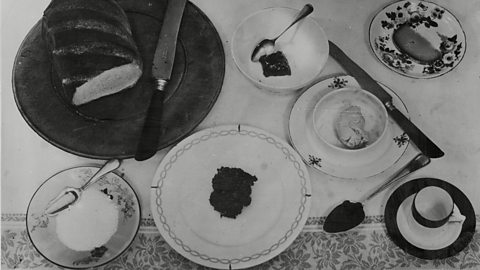
- count3 of 7
